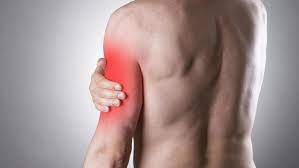
Ligament Pain
Ligaments are bundles of connective tissue that connect one bone to an adjacent bone. The basic building blocks of a ligament are collagen fibers. These fibers are very strong, flexible, and resistant to damage from pulling or compressing stresses. Collagen fibers are usually arranged in parallel bundles, which help multiply the strength of the individual fibers. The bundles of collagen are attached to the outer covering that surrounds all bones, the periosteum.
Ligaments can also prevent movement. Recall trying to bend your knee in the opposite direction? Your knee also contains ligaments that ensure your leg can’t bend backwards. These ligaments are important for maintaining the stability of the joint while it is in motion.
Pains ligaments are often caused by injuries, including sprains. This type of musculoskeletal pain often becomes worse when the affected area is stretched or moved.
There are 3 grades of ligament injury:
- Grade l : Mild ligament tear
- Grade 2 : Moderate ligament tear
- Grade 3 : Severe (Ruptured) ligament tear.
The symptoms of torn ligament are:
- Sudden onset of pain and severe swelling.
- Joint instability.
- Impaired function eg can’t walk or run.
Common Ligament Injuries
Acromioclavicular Joint Injury
ACL Injury
Back Muscle Pain
Dislocated Shoulder
High Ankle Sprain
Knee Ligaments Injuries
Lateral Collateral Ligament
Medial Collateral Ligament Sprain
Muscle Strain
Neck Headache
Overuse Injuries
Plantar Fasciitis
Posterolateral Corner Injury
Rheumatoid Arthritis
Sprained Ankle
Thumb Sprain
What Causes Common Ligament Injuries?
Ligament injuries in athletes are common and can occur at any joint. The knee and ankle are particularly vulnerable but it is sport specific. A ligament can torn when is straightened beyond its normal limits (hyperextended), twisted, or bent side to side. It is most common when the ligaments around a particular joint are at full-stretch can cause it to tear away from the bone.
Common Treatments for Ligament Pain & Injury
In a Grade 2 sprain, some but not all of the ligament fibers are torn. Moderate swelling and bruising above and below the ankle joint are common. Almost all ankle sprains can be treated without surgery. Even a complete ligament tear can heal without surgical repair if it is immobilized appropriately. The time period varies greatly depending upon the location and severity of injury. Your best guide will be provided by your health practitioner. The following can be used for faster recovery:
